The Encyclopedia Britannica describes it as "a large, hairy human-like creature believed by some persons to exist in the northwestern United States and western Canada. It seems to represent the North American counterpart of the Abominable Snowman, or Yeti."
The Britannica goes on to say that a "British explorer David Thompson is sometimes credited with the first discovery (I 1811) of a set of Sasquatch footprints, and hundreds of alleged prints have been adduced since then." It continues by mentioning the Patterson photographs taken at Bluff Creek, California in 19667, referring to it as a legend.
The Britannica explains that "Sasquatch is described as a primate ranging from six to fifteen feet tall, standing erect on two feet, often giving off a foul smell, and either moving silently or emitting a high-pitched cry." It also states that "footprints have measured up to twenty-four inches in length and eight inches in width." It further explains that "a Soviet scientist, Boris Porshnev, suggested that Sasquatch and his Siberian counterpart, the Almas, could be a remnant of Neanderthal man, but most scientists do not recognize the creature's existence." Fortunately, this concept is changing!
While you might think this is Bigfoot in a nutshell, there is much more to the creature than meets the eye. Indian Nations across the North American continent have legends and folklore featuring Bigfoot that go back to the beginning of recorded history. Since much of the history has been handed down from father to son, mother to daughter, and retold by the storytellers of the Indian People, there is a lot of confusion.
According to Living Myths, authored by Kyle Thompson, "Native American myths could equally be called folktales: They seem to be about ordinary people, not gods. However, the Native American attitude is that everything is animated by divinity. Hence ordinary people, animals and places are divine...Universal principles are held to be more important than individual traits."
According to the livingmyths.com website, "Claude Levi-Strauss, a structuralist anthropologist, saw myths as stemming from a human need to make sense of the world and to resolve cultural dilemmas."
The Ojibwa call him Ragaru and many feel that he appears to warn of danger-- a disruption in the harmony. The increasingly frequent sightings seem to bring dire warnings for the Indian People. Perhaps this powerful entity, who many believe can change form, is trying to get our attention. Is it bringing the message that we have been charged with caring for and protecting the earth and we are not honoring this sacred trust?
Many of the Indian Peoples believe that Bigfoot is more than flesh and blood. He seems to represent a spiritual concept. His role I the Indian People's society is complicated, for his hold on them is more spiritual than physical. They allude to the elusive nature of the creature by explaining that those who seek him out, no matter what their motives, will not be able to see him.
My husband and I have long thought that they possess some latent genetic qualities that normal humans discarded as we evolved. They may be so attuned to nature, we fail to comprehend just how able they are to protect themselves. We have noticed in our research findings that to our knowledge, no one who has ever deliberately sought them out has ever discovered and documented them. Sightings only seem to happen by chance and circumstance - when both the creature and the human fail to notice that they are converging on each other. To have lasted undiscovered this long means that they are endowed with spectacular abilities to blend into their environment and to avoid human contact. The Indians seem to have this knowledge and, for the most part, respect it.
An additional report of dogs who balk and refuse to continue when faced with tracking these creature future documents these elusive qualities. These dogs also have instincts which are left over from their ancestors and warn them to keep away or be harmed. It could be pheromones. It could be instinctual memory brought on by the smell the pheromones produce. What ever it is, perhaps the odor it produces is that warning that we are intruding on its territory.
The Lakota People refer to Bigfoot as "my brother, Ci-e. It is what the "Old People" call him. Many Indian People believe it is evil to kill Bigfoot. Many of the older tribe members refer to them as "quiet people." They are as much a part of the forest as the Indian who honor ad respect them. The two peoples have been known to share the spoils that the forest provides. Most do not fear them for they don't seem to harm the Indians.
According to an article published on the Bigfoot Encounters website: "The Athabaskan call him Kone. Salish people call him Skwanight-tem, which means "stick Indian;" Caretaker of the Forest Woodsman; and of course, Sasquatch." The Alaskan Indians have much love and respect for Bigfoot. There are stories of generosity and kindness heaped on the Indian People by the Sasquatch. They, in return, do the same for him by leaving gifts in the forest for him.
In a 1957 newspaper article written by Alex MacGillivray, he talks about a man named John W. Burns. He was a "Chehalis Indian Reserve schoolteacher-Government Indian Agent." Burns collected the stories told to him by the Indians on the reservation. The name, Sasquatch is reported to have been coined by Burns from the Salish language. It means "hairy giant." Burns came to believe that Bigfoot was actually a descendent of these people since the Indians reported that it would talk to them in their own language.
The Choctaw report the belief in a horrible beast they call "Shampe." It is reported to be a giant. Kyle Thompson tells about this beast in one of the articles on his website. (http://www.iearn.org.au/fp/art/stories/echoctaw.htm). So, you can see that Bigfoot reports go back farther than we have records.
In any legend, myth, or story, there is always a grain of truth. Perhaps that truth is yet to be discovered.
Comment: The following is from the website 'The History of Sasquatch' as a "Case History" from a few notable people. Further excerpts from the explorer David Thompson from the year 1811 are below underneath "David Thompson Route".
SASQUATCHHISTORY.COM
1792
Spanish explorer Jose Mariano Mozino
Pacific Northwest, United States
Reported in his journal "his body as very monstrous, all covered with stiff black bristle; a head similar to a human one but with much greater, sharper and stronger fangs than those of the bear; extremely long arms; and toes and fingers armed with long curved claws."
1811
Settler David Thompson
Jasper, Alberta, Canada
According to his journal he found footprints of a Sasquatch. An exerpt reads "I measured it; four large toes of four inches in length to each a short claw; the ball of the foot sunk three inches lower than the toes, the hinder part of the foot did not mark well, the length fourteen inches, by eight inches in breadth".
1840
Missionary Elkanah Walker
Northern Washington Territory
Walker was a missionary to the Spokan Indians. He wrote a letter to his superiors in which he describes unknown creatures that inhabited the woods. The excerpt reads as follows: "They believe in the existence of a race of giants which inhabit a certain mountain off to the west of us. This mountain is covered with perpetual snow. They inhabit its top. They may be classed with Goldsmith's nocturnal class and they cannot see in the daytime. They hunt and do all of their work in the night. They are men tealers. They come to the people's lodges in the night when the people are asleep and take them, and put them under their skins and take them to their place of abode without even waking. When they wake in the morning they are wholly lost, not knowing in what direction their home is. The account that they give of these Giants will in some measure correspond with the Bible account of this race of beings. They say their track is about a foot and a half long. They will carry two or three beams upon their back at once. They frequently come in the night and steal their salmon from their nets and eat the'm raw. If the people are awake they always know when they are coming very near, by their strong smell, which is most intolerable. It is not uncommon for them to come in the night and give three whistles and then the stones will begin to hit their houses. The people believe that they are still troubled with their nocturnal visits."
1884
Train crew
Victoria, British Canada
Train crew workers site, chase, and capture what they believe is a baby Sasquatch. The ape-like creature was named Jacko. The animal mysteriously disappeared while being transported.
1924
Albert Ostman
British Columbia
Albert Ostman was a prospector who was reportedly captured by a Bigfoot and held captive for approximately a week before being able to escape. He stated that he was guarded by members of the Bigfoot family while others gathered food. According to Ostman the creatures were vegetarians. He also did not tell anyone about his encounter until 1957 because he assumed people would think he was crazy or making the story up.
1924
Group of Miners
Ape Canyon, Washington
Fred Beck and other prospectors settles in for the night in a cabin. Shortly after they claimed to be attacked by Sasquatches throughout the night. One of the men shot and killed a Bigfoot which rolled down an embankment. The creatures threw rocks and tried to enter the cabin on numerous occassions. The attack lasted until morning. The miners reported seeing the creatures in the daylight and fled the cabin without taking any of their belongings.
1941
The Chapman Family
Ruby Creek, Vancouver
The Chapmans were Native Americans who had land and a house near the Ruby Creek Area. Mrs. Chapman tells of a creature who she has seen several times and was terrifying. One account is as follows: "one of her children had come to the house shouting about a "big cow coming out of the woods." She looked out the window and saw a man- like creature about eight feet tall and covered all over with fairly dark hair. It was walking across a field towards the house. She did not see its face from close up, but she was sure that it had a flat nose, not a snout like a bear. Bears were very common around Ruby Creek at that time, and she was thoroughly familiar with their appearance.". Although thought to be a very large bear, the descriptions and drawing of a footprint closely resemble a sasquatch.
1955
William Roe
Tete Juane Cache, British Columbia
William Roe claims to have seen a female sasquatch while hiking on a mountain. In an excerpt from his sworn affidavit he recalls: "This, to the best of my recollection, is what the creature looked like and how it acted as it came across the clearing directly towards me. My first impression was of a huge man, about six feet tall, almost three feet wide and probably weighing somewhere near 300 pounds. It was covered from head to foot with dark brown, silver-tipped hair. But as it came closer I saw by its breasts that it was a female. And yet, its torso was not curved like a female's. Its broad frame was straight from shoulder to hip. Its arms were much thicker than a man's arms, and longer, reaching almost to its knees. Its feet were broader proportionately than a man's, about five inches wide at the front and tapering to much thinner heels. When it walked it placed the heel of its foot down first, and I could see the grey-brown skin or hide on the soles of its feet."
1958
Jerry Crew
Bluff Creek, California
Jerry Crew was a logging foreman who had nooticed disruptions at the site during the night time hours. While searching for clues as to what it could be he came across extremely large footprint. He made plaster casts of these and took them along with his story to a local newspaper. It is here that the term "Bigfoot" was coined. Literally due to the fact the casts looked like they were made of very big feet.
1967
Robert Patterson, Bob Gimlin
Bluff Creek, California
These men claimed to have captured a female Bigfoot on video camera. This in a way is a Bigfoot enthusiest's Roswell. The film has been watched, slowed down, zoomed in on, and disected frame by frame. Although no one can 100% explain this away as a hoax, there is also no physical specimen to back up the footage. There are literally hundreds and hundreds of sites and Youtube threads devoted to this. You can watch the video here from the National Geographic Channel.
From Bigfoot Encounters
David Thompson, the great explorer of the western US and Canada:
On January 7th, 1811, David Thompson, a surveyor and trader for the Northwest Company, attempted to cross the Rocky Mountains near the present day site of Jasper, Alberta. Thompson kept a daily journal, (see T.C. Elliott, "Journal of David Thompson," Oregon Historical Quarterly, 15 (March-June 1914) Thompson also published a work called the "Narrative", which was based on his journals.
In the journal entry for January 7th, 1811, Thompson wrote:
"I saw the track of a large Animal - has 4 large Toes abt 3 or 4 In long & a small nail at the end of each. The Bal of his foot sank abt 3 In deeper than his Toes - the hinder part of his foot did not mark well. The whole is about 14 In long by 8 In wide & very much resembles a large Bear's Track. It was in the Rivulet in about 6 In snow."
40 years later, when he expanded upon this experience in his "Narrative", he wrote:
"January 7th continuing our journey in the afternoon we came on the track of a large animal, the snow about six inches deep on the ice; I measured it; four large toes each of four inches in length, to each a short claw; the ball of the foot sunk three inches lower than the toes. The hinder part of the foot did not mark well, the length fourteen inches, by eight inches in breadth, walking from north to south, and having passed about six hours. We were in no humour to follow him; the Men and Indians would have it to be a young mammouth and I held it to be the track of a large old grizzly bear; yet the shortness of the nails, the ball of the foot, and its great size was not that of a Bear, otherwise that of a very large old Bear, his claws worn away, the Indians would not allow."
In another part of the "Narrative", Thompson brings up this experience:
"I now recur to what I have already noticed in the early part of last winter, when proceeding up the Athabasca River to cross the mountains, in company with men and four hunters, on one of the channels of the River we came to the track of a large animal, which measured fourteen inches in length by eight inches in breadth by a tape line (14 x 8). As snow was about six inches in depth the track was well defined and we could see it for a full hundred yards from us, this animal was proceeding from north to south. We did not attempt to follow it, we had not time for it, and the Hunters, eager as they are to follow and shoot every animal, made no attempt to follow this beast, for what could the balls of our fowling guns do against such an animal?"
Report from old times had made the head branches of this River, and the Mountains in the vicinity the abode of one, or more, very large animals, to which I never appeared to give credence; for these reports appeared to arise from that fondness for the marvellous so common to mankind: but the sight of the track of that large a beast staggered me, and I often thought of it, yet never could bring myself to believe such an animal existed, but thought it might be the track of some Monster Bear."
Comment: The many sightings, myths, legends and issues surrounding Bigfoot, by one of its names, are wide and varied, and there are strange instances that seem to be tied to these creature beings. For a further review, you may want to read the book by David Paulides titled 411 Missing, which can be seen in this SoTT article Odd, Unexplained Disappearances Haunt Our Nation's National Parks
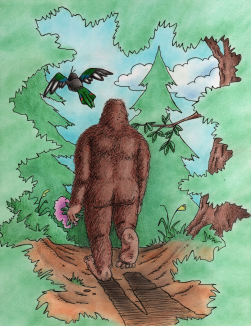
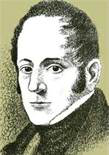
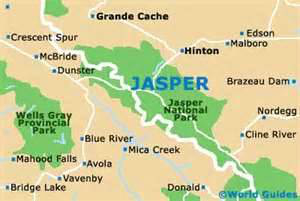
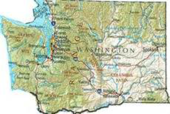
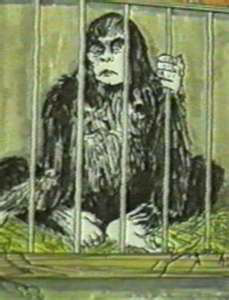
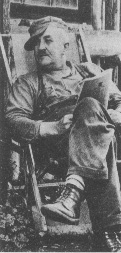
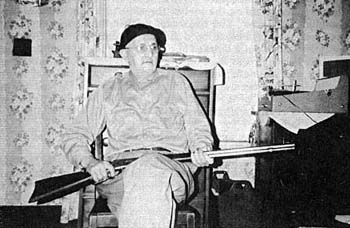
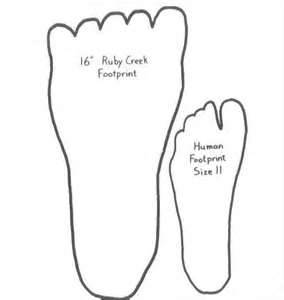

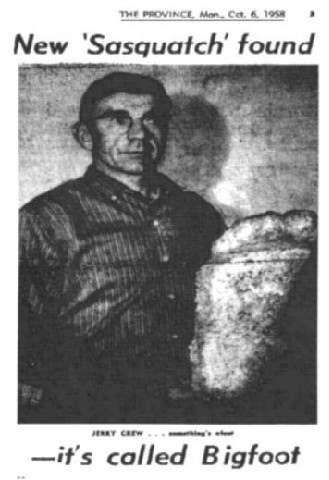
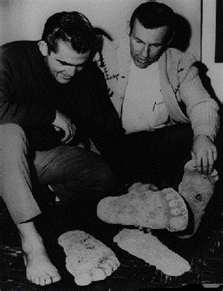
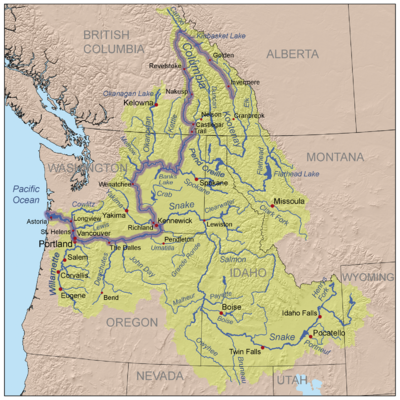



Reader Comments
to our Newsletter